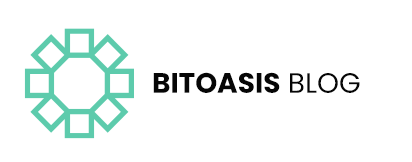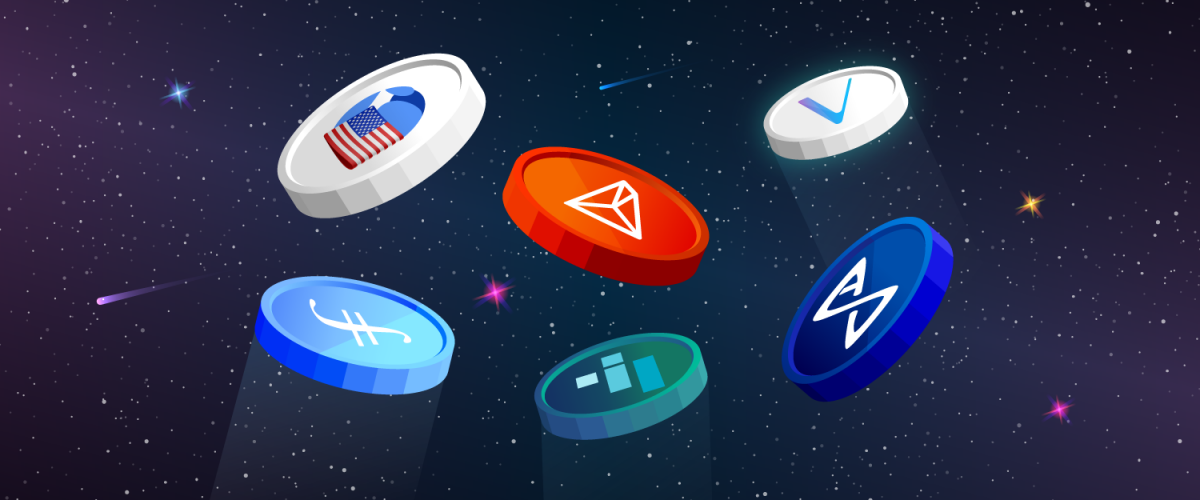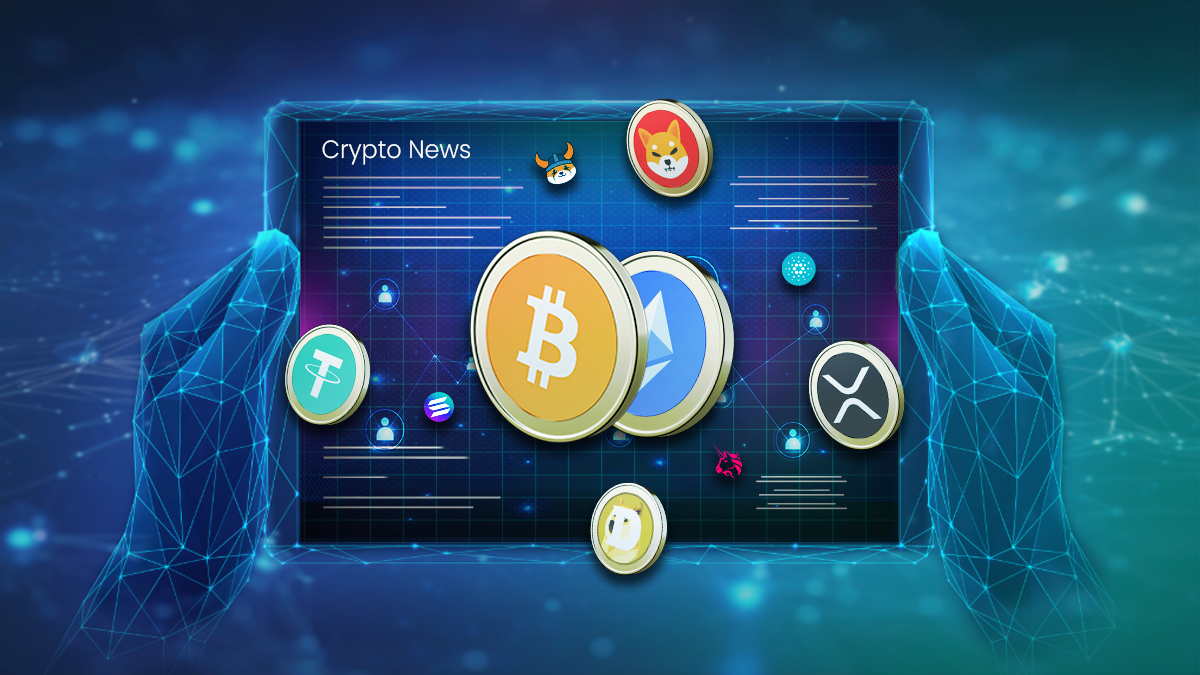As part of our ongoing effort to provide you with every cryptocurrency you wish for, we’re excited to announce that 26 new crypto assets have arrived at BitOasis. The new cryptocurrencies represent diverse industries, including gaming and the metaverse, predictions, sports and entertainment, the Internet of Things, and more.
Starting today, you can buy, sell or store the popular token Tron (TRX), play-to-earn token Axie Infinity (AXS), sports and entertainment token Chiliz, stabelcoins, and several Ethereum-based assets.
All our new cryptocurrencies are now available in the United Arab Emirates dirham (AED) and Saudi riyal (SAR) trading pairs. You can also use Tether (USDT), and other crypto pairs to buy and sell a broader range of cryptocurrencies.
With the addition of these new tokens, we now offer 68 crypto assets to invest in, bringing us closer to our goal of becoming the leading cryptocurrency platform in the region. But it doesn’t end here as we aspire to support more projects as part of our vision to help build a new digital financial system.
Learn more about all the new tokens below.
TerraUSD (TERRAUST)
TerrraUSD (TERRAUST) is a decentralized and algorithmic stablecoin of the Terra blockchain value-pegged to the US dollar. Algorithmic stablecoins bridge crypto to traditional currencies but run on internal algorithms that maintain the supply and demand of the coin and an ideal coin price. However, TERRAUST isn’t backed by US dollars reserves in a bank account. Instead, to mint or create 1 Terra USD, USD1.00 worth of TerraUSD’s reserve asset (LUNA) must be burned.
Tron (TRX)
TRON aims to accelerate the decentralization of the Internet via blockchain technology and decentralized applications (DApps). The Tron network is a global online content sharing platform and allows developers to create autonomous applications that operate without intermediaries. The Tron network is a purely community-driven Decentralized Autonomous Organization (DAO) after completing full decentralization in December 2021. The network’s main crypto asset is Tronix or TRX, which facilitates peer-to-peer file sharing, governance and voting rights, and the operation of autonomous operations in the network.
Unus Sed Leo (LEO)
LEO is a utility token for iFinex, the parent company of Bitfinex, a cryptocurrency exchange. LEO token holders get trading discounts, reduced fees, and other benefits across iFinex platforms and future projects. LEO tokens were issued on two blockchains, with 64% of the original supply on Ethereum and the rest on the EOS network. Initially, the total supply of LEO tokens was set at 1 billion; however, the circulating supply of LEO tokens is designed to diminish over time. This is due to the token’s burn mechanism that enables iFinex to buy back LEO tokens from the market every month.
FTX Token (FTT)
The FTX token (FTT) is the native cryptocurrency used on the FTX crypto exchange, which offers derivatives trading, including futures and options. People who own FTX tokens get access to several benefits on the FTX exchange, including lower trading fees. FTT holders can also use their tokens as collateral to trade derivatives. The token was issued on the Ethereum network and can be traded and used to carry out financial transactions.
Filecoin (FIL)
Filecoin describes itself as a decentralized storage network that turns cloud storage into an algorithmic market. The blockchain runs on a novel proof, called Proof-of-Spacetime, where miners storing data create blocks. Filecoin’s blockchain has a native protocol token, FIL, which miners earn by providing storage to clients. As with Bitcoin, Filecoin miners compete to mine blocks with sizable rewards, and Filecoin mining power is proportional to active storage. FIL tokens are used as payment for these services and as an economic incentive to ensure files are stored reliably over time.
VeChain (VET)
VeChain aims to enable digital collaboration between businesses by giving them new tools for data transfer. The smart contract platform was initially developed for supply chain management. Still, the protocol was rebranded to VeChain Thor after it increased its scope for decentralized applications (dApps) to provide more general data solutions. The network uses the Proof of Authority consensus mechanism to help process large transaction volumes. VeChain has two native tokens, VET, used to store and transfer value, and VTHO for transactions.
Elrond eGold (EGLD)
Elrond describes itself as a secure blockchain platform for distributed apps, enterprise use cases, and the new internet economy. The network employs the Secure Proof of Stake (SPoS) consensus mechanism, resulting in a comparatively low cost per transaction.
Elrond’s cryptocurrency, EGLD, can be used for sending, rewarding network contributors, and running smart contracts. People who own and stake EGL can also vote on network upgrades and earn rewards in newly minted EGL.
Theta Network (THETA)
The Theta Network describes itself as a next-generation video and entertainment blockchain platform. It provides decentralized video streaming and peer-to-peer video delivery that promises reduced costs. The platform rewards viewers with Theta Fuel for participating in the network and sharing excess bandwidth and resources. The network’s native cryptocurrency, Theta (THETA), allows the token’s holders to participate in various governance tasks.
Axie Infinity (AXS)
Axie Infinity is a leading blockchain-based play-to-earn gaming platform where players can own, buy, sell and trade resources they earn in the game. The network is more widely recognized as the most significant and robust community in (Non-Fungible Token) NFT gaming. The network’s main crypto asset, Axie Infinity Shards or AXS, is an Ethereum-based token that facilitates transactions and in-game trading on Axie Infinity. AXS holders can claim rewards for staking their tokens, playing the game, and participating in crucial governance votes that decide the future of the gaming network.
IOTA (IOTA)
The IOTA Foundation aims to build a standardized protocol for the Internet of Things (IoT). The network uses a unique consensus algorithm (Tangle) that requires users to validate two transactions to make a transaction of their own. Since IOTA is not a blockchain, there are no miners and thus no rewards. Users can use IOTA to make feeless micro-payment transactions between devices.
The Graph (GRT)
The Graph is a decentralized protocol that indexes blockchain data from networks like Ethereum just as search engines index the web. The software also aims to enable the efficient querying of blockchain data. The Graph token (GRT) is an ERC-20 token on the Ethereum blockchain, and active indexers earn income from the network proportional to the amount of work they perform and their GRT stake.
Kusama (KSM)
Kusama was founded in 2019 by Gavin Wood, founder of Polkadot and co-founder and former CTO of Ethereum; thus, the network is often described as Polkadot’s cousin. The scalable network of specialized blockchains has nearly the same codebase as Polkadot and is built using Substrate (a framework for creating customized blockchains). The network is an experimental development environment for teams who want to move fast and innovate on Kusama or prepare for deployment on Polkadot. Kusama is owned and governed by a community of network participants who vote on and control the evolution of the network- mainly through the KSM token.
TrueUSD (TUSD)
TrueUSD describes itself as a regulated stablecoin fully backed by the US dollar. It runs on the Ethereum blockchain and its value is pegged to the US dollar. To that end, the supply of TrueUSD (TUSD) is collateralized by US dollars held in escrow by banks. People can purchase the TUSD tokens and redeem them for US dollars on the TrustToken website. People who own TUSD can stake, farm, and mine the stablecoins on DeFi platforms, Ethereum, TRON, etc.
Chiliz (CHZ)
Chiliz operates the blockchain-based sports entertainment platform founded by a Malta-based FinTech provider by the same name. It aims to bridge the gap between sports and entertainment enthusiasts and influencers. The network offers multiple fan tokens through Socios that enable fans to participate and influence club-related decisions through surveys and polls. Chiliz has developed partnerships with some of the biggest names in the industry like FC Barcelona, Manchester City, Juventus, and Paris Saint-Germain. People who buy the Chiliz native token CHZ access various fan tokens and own a stake in their club.
Nexo (NEXO)
Nexo is a blockchain-based lending platform that offers cryptocurrency-backed loans. The network enables people to deposit an accepted token — such as Bitcoin, Ethereum, or XRP — as collateral to receive a loan in fiat currency or stablecoin. The Nexo network has a native cryptocurrency (NEXO) that allows token holders to receive yield from Nexo’s profits. When locked, people receive discounts on interest accumulated on loans and the opportunity to receive interest payments on funds deposited.
Gala (GALA)
The decentralized Gala Games ecosystem allows players to own their in-game items and shape the Gala Games roadmap. Players and node owners help determine what games should be added to the platform or what should be funded by the decentralized Gala Games ecosystem through distributed voting mechanisms. Players can also own Non Fungible Tokens (NFTs) and the gaming network’s utility token, (GALA), to make in-game purchases.
Curve (CRV)
Curve is a decentralized exchange (DEX) on the Ethereum network that allows people to exchange stablecoins. The DEX uses the Automated Market Maker (AMM) model to enable people to trade crypto without permission and automatically use liquidity pools. And like other DEX based on the AMM model, Curve offers rewards to encourage users to deposit their funds to pools. Curve also redistributes proceeds from swap fees charged by the platform between all liquidity providers in the form of Curve tokens (CRV), which are also used for governance and voting.
Synthetix (SNX)
Synthetix, based on the Ethereum blockchain, provides on-chain exposure to various crypto and non-crypto assets. It’s a decentralized synthetic asset issuance protocol that enables the creation of synthetic assets, offering unique derivatives and exposure to real-world assets on the blockchain. The protocol currently supports synthetic fiat currencies, cryptocurrencies, and commodities. Synthetix Network Token (SNX) is an Ethereum-based token native to the Synthetix network.
Qtum (QTUM)
Pronounced “Quantum,” Qtum is a Proof of Stake blockchain that supports decentralized applications (dApps). Stakeholders can have their say over how the platform functions through Qtum’s custom-built decentralized governance protocol (DGP). The network’s native token, the QTUM token, is used for gas and smart contract transactions. The network rewards node operators in QTUM tokens.
Gnosis (GNO)
Gnosis aims to build an infrastructure for decentralized applications that can act as forecasting tools for finance, government, and insurance decision-makers. The maximum supply of the network’s main token (GNO) is fixed at 10 million and the token helps ensure its transactions are reliable and distributed.
1INCH (1INCH)
The 1inch Network is a decentralized exchange (DEX) aggregator where traders exchange crypto assets without an intermediary overseeing the transaction. 1Inch aggregates data from other decentralized exchanges like Uniswap, SushiSwap, 0x, etc. The network’s native cryptocurrency, (1INCH), serves as governance and a utility token. It is a multichain token currently available on the Ethereum network too.
DigiByte (DGB)
DigiByte is a blockchain used for digital assets, smart contracts, decentralized applications, and secure authentication. Digibyte is a fork of Bitcoin, and its blockchain is released under an MIT license and is verifiable by any individual or entity. DigiByte has a maximum supply of 21 billion DigiByte, which will be thoroughly mined by 2035. The network uses five different proof of work consensus algorithms to mine new blocks and introduce new assets into circulation.
Ocean Protocol (OCEAN)
Ocean Protocol is a blockchain-based network that allows publishers, individuals, and businesses to monetize data through ERC-20-based data tokens.
The protocol aims to enable consumers to access data on the Ocean Market that were previously unavailable or difficult to find. On Ocean Protocol, a unique datatoken represents each data service that allows third parties to perform operations on the data within the publisher’s control. OCEAN is the network’s utility token used for community governance and staking on data and buying and selling data as the basic exchange unit on the Ocean Market.
Verge (XVG)
Verge seeks to improve upon the original Bitcoin network and aims to be a user-friendly digital currency and a blockchain for everyday transactions. Verge describes itself as a community-driven initiative entirely run by a team of volunteers. Its native cryptocurrency, Verge (XVG), is a privacy-focused coin and enables people to send transactions to stealth addresses, among other privacy features.
Aragon (ANT)
Aragon is a decentralized platform built on the Ethereum network and describes itself as an open-source infrastructure with governance plugins. The network allows developers to create and manage decentralized applications (dApps) and Decentralized Autonomous Organizations (DAOs). The network’s native cryptocurrency, Aragon (ANT), is an ERC-20 token that enables ANT holders to participate in governance.
Band Protocol (BAND)
Band Protocol is a cross-chain data oracle platform that aggregates and connects real-world data (like sports, weather, random numbers, price feeds) to smart contracts. Through API (Application Programming Interface), the network facilitates data exchange from on-chain to off-chain networks. Band Protocol initially launched as a project on the Ethereum blockchain as an ERC-20 token, but it transitioned to the Cosmos network with the release of Band Protocol 2.0. Brand Protocol’s native token (BAND) is used as collateral by validators and for paying for private data.


